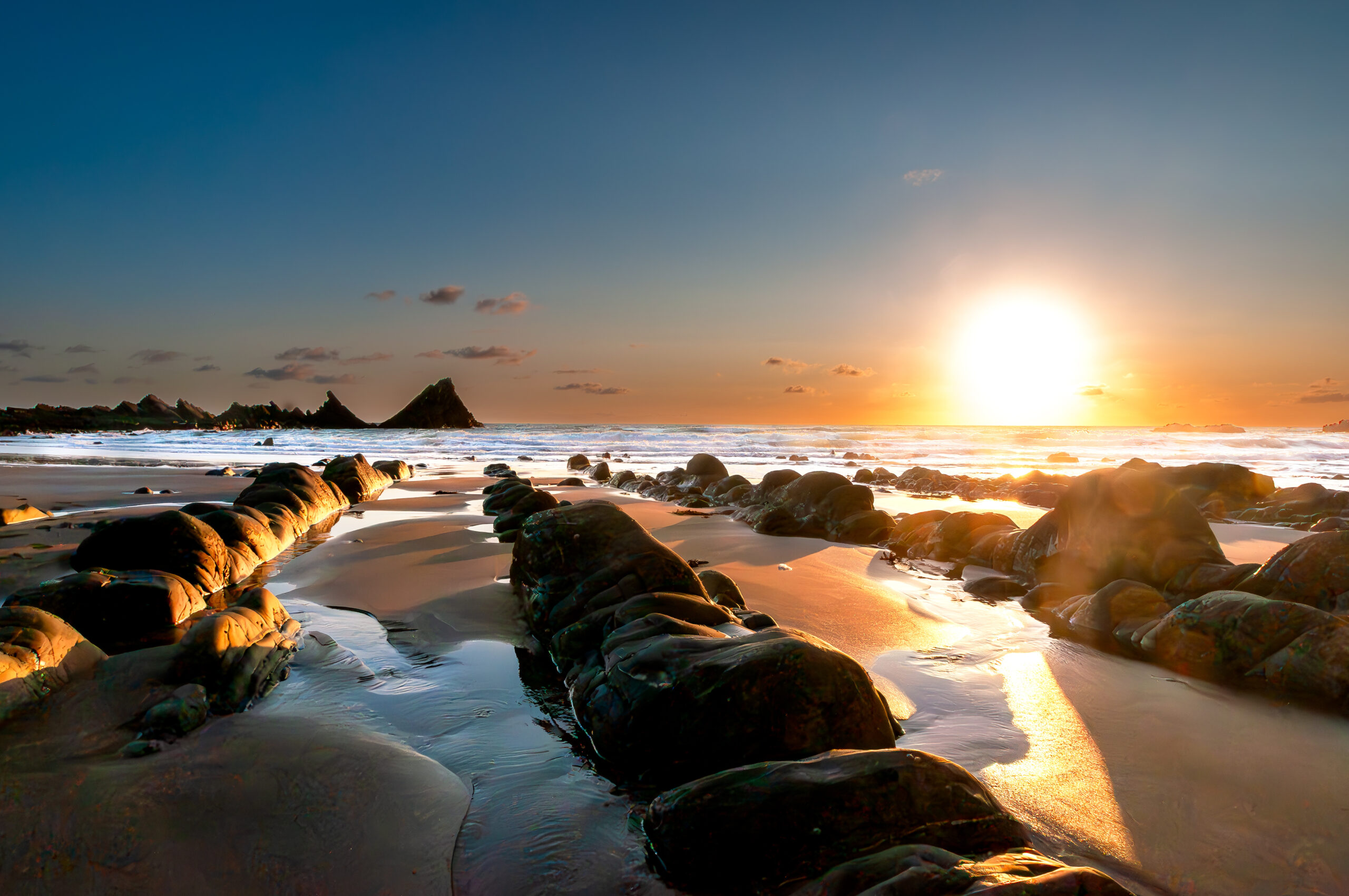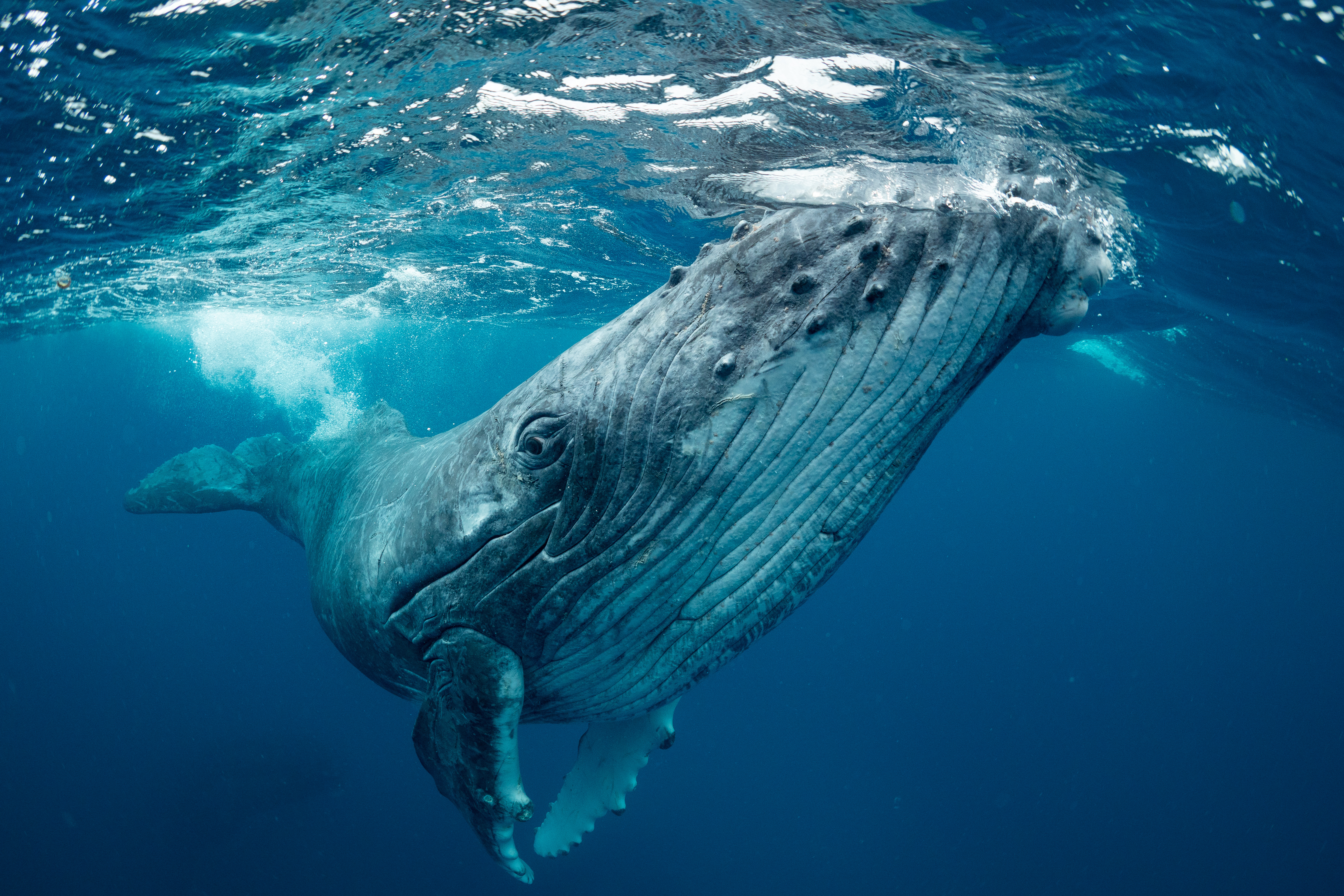Innovation, research and a mammoth volunteering effort helped conservationists learn more about wildlife in UK seas, reveals The Wildlife Trusts’ 2024 Marine Review.
Every year The Wildlife Trusts’ Living Seas teams compile a Marine Review that explores the wildlife in UK seas. The Review reflects on work to protect and restore UK seas by staff, volunteers, scientists, and other organisations. The annual review also highlights pressures on the marine environment, including from development, pollution, and climate change.
This year the Review recounted the over 46,000 thousand hours clocked by volunteers surveying shorelines and recording wildlife. Discoveries include climate-indicator sea slugs and seaweeds, plus sightings of conger eels and humpback whales.
The Wildlife Trusts were one of the charities behind The Blue Carbon Mapping Project, which saw the UK become the first country to estimate the carbon stored in its seabed habitats. The report reinforced calls to ban bottom-trawling in Marine Protected Areas (MPAs), as 43% of the UK’s blue carbon is in these zones. The charity said in its Review that 80% of the British public want to see bottom trawling banned in protected areas, and measures to ensure that offshore developments are nature positive.
Ruth Williams, head of marine conservation at The Wildlife Trusts, says: “People are central to nature recovery and made huge contributions to our knowledge of UK seas this year. Wildlife surveys and monitoring have led to incredible discoveries, including new species on UK shores.
“As the first country to map all its blue carbon habitats, the UK has a unique position to champion better protection for seabed habitats. They are the unsung heroes in our fight against climate change. We need policies that stop damaging activities in protected areas, plus continued support for innovation, monitoring and work to improve coastal habitats.”
Photo: Paul Naylor
Discoveries of climate change indicators and non-native species were made through The Wildlife Trusts’ national intertidal survey programme, Shoresearch, and volunteering days. Highlights include:
- First records of a warty doris sea slug in Sussex and rainbow sea slug in Devon.
- First records of devil’s tongue weed and the non-native kelp seaweed, wakame on a Kent shore. Wakame was recorded at Wembury, Devon for the first time.
- Hundreds of mauve jellyfish washed up in Cornwall and on the Isles of Scilly. They are normally found in warmers waters such as the Mediterrranean.
- A loggerhead sea turtle was found in Cumbria and released in the Azores.
Monitoring of marine habitats demonstrate how wildlife can recover when areas are properly protected. Highlights include:
- Giant mussel beds, greater diversity of fish and increased numbers of lobster were reported in Sussex – three years after a byelaw was passed to protect 300km2 of seabed from trawling. A tope shark and European eel were also found among 81 different marine species recorded.
- Monitoring in the Medway – the largest no-take zone in the UK – found huge numbers of juvenile bass. Shore crabs were also found in abundance.
- A spiny lobster was found in Wembury Bay, Devon, for the first time in living memory. They are returning following excessive fishing in the 60s and 70s.
- St Piran’s hermit crabs were recorded in great numbers on the south coast. They were wiped out by the Torrey Canyon Spill of 1967.
New conservation projects include large-scale initiatives in Cornwall and Essex to link conservation efforts on land with protecting important marine and coastal habitats. Other conservation highlights include:
- The first UK trial of remote setting to reintroduce native oysters in the Humber estuary, allowing seeded oysters to be produced close to where they will grow.
- Manx Wildlife Trust noted the highest number of seal pups since recording began in 2009. Thermal imaging helped to record 98 pups on the Calf of Man. Almost 1,500 pups were counted in one week at Donna Nook, Lincolnshire.
People made more wildlife sightings that emphasise the rich biodiversity of UK shores and seas. Highlights include:
- Humpback whales were seen off Lancashire, Pembrokeshire and North Wales. Over 30 humpbacks were recorded off Cornwall last winter, including ‘Ivy’ who was freed from entanglement by lifeboat crews.
- A black bream caught at Poole Bay contained 38 seahorses – baffling experts.
The Wildlife Trusts’ marine review 2024 can be read here.


